- Administrator
- Albums and Singles
 I am a fairly passionate Charlemagne Palestine fan, but it must be noted that my love is a very complicated and highly conditional one. I tend to enjoy his music in spite of his eccentricities rather than because of them (they can be quite grating at times).  Consequently, I went into this album with no small amount of trepidation, as there were three red flags right off the bat: 1.) a ridiculous title, 2.) something resembling the word "sing," and 3.) a record label that I was completely unfamiliar with in Idiosyncratics.  Also, the nasal a cappella opening seemed to instantly confirm those misgivings.  Consequently, I was absolutely knocked sideways when Ssingggg then unexpectedly blossomed into an apocalyptic monster of a crescendo.  At the risk of sounding crazy, I believe this easily rivals all of Palestine's previous career highlights.  Also, as far as I am concerned, this is a strong (albeit dangerously early) Album of the Year contender.  I am confident that history will vindicate me.
I am a fairly passionate Charlemagne Palestine fan, but it must be noted that my love is a very complicated and highly conditional one. I tend to enjoy his music in spite of his eccentricities rather than because of them (they can be quite grating at times).  Consequently, I went into this album with no small amount of trepidation, as there were three red flags right off the bat: 1.) a ridiculous title, 2.) something resembling the word "sing," and 3.) a record label that I was completely unfamiliar with in Idiosyncratics.  Also, the nasal a cappella opening seemed to instantly confirm those misgivings.  Consequently, I was absolutely knocked sideways when Ssingggg then unexpectedly blossomed into an apocalyptic monster of a crescendo.  At the risk of sounding crazy, I believe this easily rivals all of Palestine's previous career highlights.  Also, as far as I am concerned, this is a strong (albeit dangerously early) Album of the Year contender.  I am confident that history will vindicate me.
There truly has never been anyone else quite like Charlemagne Palestine and there presumably never will be, as I consistently find myself unable to comprehend his various artistic decisions or guess where any of his pieces are ultimately headed.  Each new album is a fresh surprise.  Ssingggg is a prime example of that singularly unpredictable, enigmatic, and somewhat self-sabotaging nature, as it opens with little more than the hum from a rubbed glass and some high-pitched quasi-ritualistic drone-singing.  Gradually, a massive, buzzing, and complexly dissonant organ chord swells into the picture, forming the perfect backdrop for Palestine's ominous and maniacal anti-mass…until his wordless chants begin to cohere into the word "sing" and–later–the phrase "I love to sing," thus dissipating the mysterious, haunting spell and making me briefly grimace with exasperation.  It is almost like he suddenly thought "Oh dear, this is getting much too great, much too soon.  I need to do something conspicuously silly fast."  Of course, an alternate possibility is that Palestine was trying to make some sort of commentary on the shifting meaningfulness/meaninglessness of language.  Or that (more likely) he was just guilelessly, earnestly, and totally unselfconsciously absorbed in his music.  Regardless of the intent, it was a curiously wrong-footing and distracting move.
Of course, the flipside of Palestine's prickly oddity is his outsider brilliance, which deceptively manifests itself through the massing, swelling, and complexly harmonizing organ drone that continues to grow even as the melodic foreground takes its strange turns.  Essentially, Charlemagne is a master magician engaged in a prolonged bit of artful misdirection, distracting me with parlor tricks (and possibly a kazoo) while the skies darken unnoticed in preparation for the storm to end all storms.  That threatened storm finally hits around the 20-minute mark and can only be described as all hell breaking loose (in the best way possible).  While the organ continues to drone on, Palestine unleashes a truly epic tape onslaught, as martial drums, sheep, choirs, political rallies, squealing children, the entire population of a rainforest, and an actual massive thunderstorm all bleed together into a buzzing, crushing maelstrom that sounds like the entire history of the world condensed into one brilliantly hallucinatory, brain-melting cacophony.  Then, after about half an hour of sustained phantasmagoric perfection, it all suddenly vanishes into silence, leaving only the lonely hum of a wet finger circling around a glass.  That is where I would expect the piece to logically end, of course, but instead it blossoms into a surreal coda involving a singing toy performing a duet with Charlemagne, which concludes with both the toy and the artist saying "bye bye."  The resulting sensation is probably not unlike staggering out of a war zone and suddenly finding oneself on the set of The Muppet Show.
Experienced on headphones, Ssingggg is a legitimately visceral, harrowing, maximalist, and synapse-frying experience; the sort of thing that qualifies more as a life event than entertainment.  I truly cannot say enough great things about how wild, ambitious, bewildering, and masterfully executed this album is. Ssingggg is Charlemagne Palestine's "mic drop" moment: this vein is done; there is no reason for him or anyone else to ever attempt something like this ever again, as it is unquestionably the last word in whatever the hell it is.  If life were a movie, Palestine would be on a boat somewhere right now, content that he has conclusively realized his destiny and never needs to make another album ever again.  Since it is not, however, I am sure he will resurface with something completely different in like a month (and I will presumably be surprised again).
 
Read More
- Administrator
- Albums and Singles
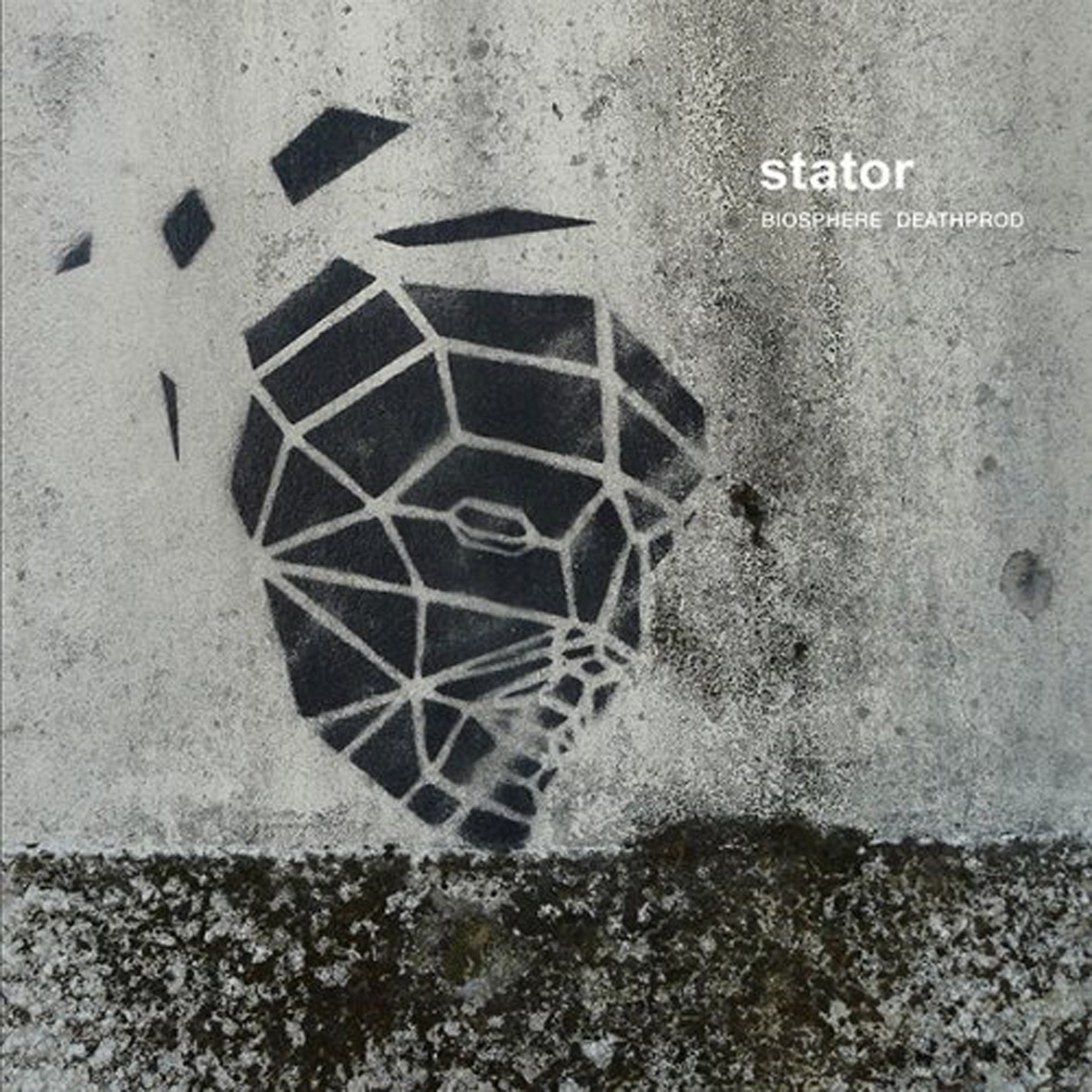 If this album was a true collaboration and had come out a decade ago, I probably would have pre-ordered it months in advance and excitedly camped out in front of my mailbox waiting for it to arrive.  Sadly, it is not (it is a split) and it did not, though Stator is still an admirably solid album.  Also, any fresh dispatch from Helge Sten's Deathprod project is always welcome.  That said, Geir Jenssen is the one who unexpectedly steals the show on this album, offering up some atypically dark and heavy fare to meet Sten's bleakness halfway.  Deathprod, of course, remains as characteristically blackened as ever.
If this album was a true collaboration and had come out a decade ago, I probably would have pre-ordered it months in advance and excitedly camped out in front of my mailbox waiting for it to arrive.  Sadly, it is not (it is a split) and it did not, though Stator is still an admirably solid album.  Also, any fresh dispatch from Helge Sten's Deathprod project is always welcome.  That said, Geir Jenssen is the one who unexpectedly steals the show on this album, offering up some atypically dark and heavy fare to meet Sten's bleakness halfway.  Deathprod, of course, remains as characteristically blackened as ever.
Notably, this is not the first time that these two have paired for a split album, as Biosphere and Deathprod previously joined forces to pay tribute to Norwegian composer Arne Nordheim on 1998's Nordheim Transformed. Stator might have some larger purpose as well, as it is a commissioned work seemingly based upon the varying meanings of "stator," which generally describes the stationary parts of a rotating assembly, but originates from the Latin word meaning "one who stands by."  While that theme is not particularly evident in the finished music without some serious mental gymnastics, it may have either shaped the process or manifested itself in too abstract a way for my feeble mind to comprehend.  I suspect I will probably never know for sure.
The first time I listened to Stator, I did so blindly and was unaware that it was a split rather than a collaboration.  Then I listened to it somewhat blindly again, knowing that it was not a collaboration, but not knowing which artist was responsible for which pieces.  I found it unexpectedly difficult to tell who was who: Jenssen and Sten did a remarkable job finding a middle ground between their somewhat disparate aesthetics and holding a sustained mood of enigmatic ominousness (Geir did most of the heavy lifting, of course, as it is impossible to imagine Deathprod edging towards warmer, more melodic territory).  Stator is a very well-sequenced and thematically/stylistically coherent whole. That said, once I finally confirmed who was responsible for each piece, the differences between the two artists came very sharply into focus–anything that has anything resembling melody or structure was the work of Biosphere, while Sten's contributions are mostly murky, amorphous voids of blackness.  That should surprise no one.
It is equally unsurprising then that most of Stator’s most memorable moments belong to Biosphere.  One of the album's finest moments, for example, is "Space is Fizzy," which is built upon a throbbing pulse that twists into an oscillating negative image of itself at regular intervals.  Even better still is the warm drone of "Baud," which is the most distinctively "Biosphere" piece on the album, but escapes being business-as-usual by augmenting its dreamy thrum with stuttering and sputtering synth textures.  Also of note is the evocative opener "Muses-C," which initially feels like a looping, blurred, and flickering reel of a fighter plane firing its afterburners.
Although he seems mostly content to contribute brief brooding interludes between the more substantial Biosphere pieces, Helge does admirably rise to the occasion in two instances.  The first is "Shimmer/Flicker," a roaring and grinding nightmare of piece that lamentably dissolves into something resembling large, rippling drips in a cavernous subterranean lake after just two minutes.  That second part is certainly likable in its own right, but it is unavoidably anti-climactic after such a crushing opening.  Later, however, Deathprod finally gets everything exactly right: the album-closing 10-minute "Optical" resembles nothing less than a visceral, slow-motion avalanche.  Like most of the Deathprod pieces on the album, "Optical" demands to be listened to loudly on headphones–Sten does not deal in immediately gratifying things like hooks or rhythms; he weaves nuanced, complexly layered hellscapes.
It would not be fair to call Stator a flawed album because it is legitimately excellent, but there are a number of exasperating little things preventing it from being even better than it is.  For example, Geir Jenssen has no shortage of great ideas, but tends to blunt them somewhat by coming across as too conspicuously composed–his well-earned illusions of otherworldliness are dispelled by very earthbound nods to modern composition and his techno past.  Sten, on the other hand, always manages to keep his work organic, complex, dynamic, and distinctively his own, yet rarely finds an inspired core motif upon which to apply his prodigious talents.  That said, each artist does manage to transcend those limitations at least once on Stator: Biosphere's "Baud" and Deathprod’s "Optical" both easily rank among each artist's finest work.  It is hard to complain that an album only boasts two sustained flashes of brilliance, but the pessimist in me cannot help but see a stunning version of Stator that might have been.  Alas.  High expectations are a killer. That said, Stator is still one of the better albums to come out this year.  It is a relief to know that Sten and Jenssen are still just as capable of greatness as ever, even if it is intermittent.
 
Read More
- Administrator
- Albums and Singles
NO FANS COMPENDIUM is a deluxe limited edition 7 CD set of Richard Youngs’ recordings for his long-running private NO FANS label. 5 CDs are Richard’s personal selection from his NO FANS releases, all of which were issued in tiny editions (20 – 18) and only available for sale at Richard’s rare shows or at Glasgow’s now defunct Volcanic Tongue shop. In addition, Richard has included two full discs of material previously unavailable in any form - a recording from 1989 pre-dating his earliest widely-known work, and a new recording from late 2014. Unbeatable as a survey of Richard’s career, everything here is of equal quality to his over-the-counter releases. In keeping with his penchant for unpredictable stylistic mashups and reinventions, there are folky laments, achingly beautiful “songs,” tape collage, rude prog noise, minimalist experiments, multi-tracked vocals, etc.
More information can be found here.
Read More
- Administrator
- Albums and Singles
:format(jpeg):mode_rgb()/discogs-images/R-878104-1187115011.jpeg.jpg)
Since the mid-1960s, Jon Gibson has played a key role in the development of American avant-garde music. No other artist has performed in the world premieres of Terry Riley's “In C,” Steve Reich's “Drumming,” and Philip Glass' “Einstein on the Beach,” three major works that changed the course of musical history. While his expertise on woodwind instruments made Gibson a go-to collaborator in Reich's, Glass', and La Monte Young's ensembles, less known are his remarkable contributions as a composer and visual artist.
Visitations, Gibson's first release under his own name, originally appeared on the Chatham Square imprint in 1973. Inspired by the books of Carlos Castaneda, Gibson departs from the structured repetition of his minimalist peers and takes the listener on an aural journey – spanning organic field recordings, ambient flutes and synthesizers, and free-flowing textures. Visitations' two side-long tracks are at once solemn and unsettling, making this an astonishing debut that firmly establishes Gibson as a pioneer in his own right.
This first-time vinyl reissue is recommended for fans of Cluster, Harold Budd and Phill Niblock.
More information can be found here.
Read More
- Administrator
- Albums and Singles

Antigravity is a trio album from legendary trumpeter Jac Berrocal and two fellow travellers in the French avant-garde, David Fenech and Vincent Epplay. A lugubrious mise-en-scène in which ice-cold outlaw jazz meets musique concrète, DIY whimsy and dubwise studio science, all watched over by the lost souls and hungry ghosts of rock ‘n roll.
Born in 1946, Berrocal is the embodiment of saturnine, nicotine-stained Parisian cool, but he is also one of a kind: indeed, “trumpeter” is hardly an adequate epithet for this musician, poet and sometime film actor who came of age in the ‘70s Paris improv scene, where the boundaries between music, art and theatre were porous and begging to be breached. Inspired by bebop, chanson, free jazz, beat poetry, early rock ‘n roll and myriad Eastern influences, and with an iconoclastic, anything-goes approach to instrumentation and technique that would later align him with post-punk sensibilities, Berrocal blazed an eccentric and unstoppable trail across the underground throughout the ‘70s and ‘80s, both solo and as part of the Catalogue group he co-founded.
During this time his uproarious performances routinely wound up jazz and rock audiences alike, but earned the admiration of no small number of wised-up weirdos: Steven Stapleton invited him to perform on two Nurse With Wound albums, and other notable collaborators in his career include Sunny Murray, Lizzy Mercier-Descloux, Lol Coxhill, Yvette Horner and James Chance. In the '90s his protean achievements were celebrated on the Fatal Encounters compilation, but far from slowing down in the autumn of his life, Berrocal has maintained an extraordinary work-rate, keeping studio dates with Pascal Comelade, Telectu and Jaki Liebezeit, among others. In 2014 he released his first solo album proper in 20 years, MDLV.
Now Berrocal has found the perfect foil in David Fenech and Vincent Epplay, two fearlessly inventive improvisers, composers and catalysts who create challenging, acutely modernist yet historically aware settings – wrought out of synthesis, guitars, computer processing, field recordings and unorthodox percussions - for Berrocal’s unmistakeable voice and breathtakingly lyrical horn sound to flourish.
More information can be found here.
Read More
- Administrator
- Albums and Singles
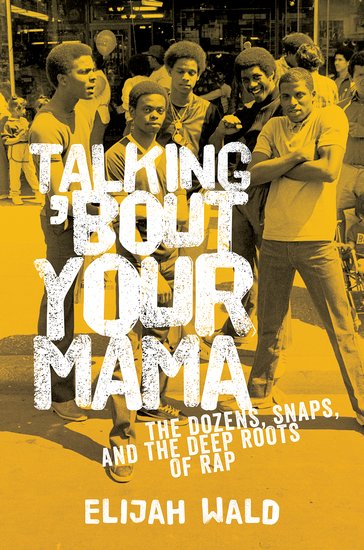
From Two Live Crew's controversial comedy to Ice Cube's gangsta styling and the battle rhymes of a streetcorner cypher, rap has always drawn on deep traditions of African American poetic word-play, In Talking 'Bout Your Mama, author Elijah Wald explores one of the most potent sources of rap: the viciously funny, outrageously inventive insult game known as "the dozens."
So what is the dozens? At its simplest, it's a comic chain of "yo' mama" jokes. At its most complex, it's an intricate form of social interaction that reaches back to African ceremonial rituals. Wald traces the tradition of African American street rhyming and verbal combat that has ruled urban neighborhoods since the early 1900s. Whether considered vernacular poetry, aggressive dueling, a test of street cool, or just a mess of dirty insults, the dozens is a basic building block of African-American culture. A game which could inspire raucous laughter or escalate to violence, it provided a wellspring of rhymes, attitude, and raw humor that has influenced pop musicians from Jelly Roll Morton and Robert Johnson to Tupac Shakur and Jay Z.
Wald goes back to the dozens' roots, looking at mother-insulting and verbal combat from Greenland to the sources of the Niger, and shows its breadth of influence in the seminal writings of Richard Wright, Langston Hughes, and Zora Neale Hurston; the comedy of Richard Pryor and George Carlin; the dark humor of the blues; the hip slang and competitive jamming of jazz; and in its ultimate evolution into the improvisatory battling of rap. From schoolyard games and rural work songs to urban novels and nightclub comedy, and pop hits from ragtime to rap, Wald uses the dozens as a lens to provide new insight into over a century of African American culture.
A groundbreaking work, Talking 'Bout Your Mama is an essential book for anyone interested in African American cultural studies, history and linguistics, and the origins of rap music.
More information can be found here.
Read More
- Administrator
- Albums and Singles

ABOUT THE FILM
During the 60’s and early 70’s as the war in Vietnam threatened its borders, a new music scene emerged in Cambodia that took Western rock and roll and stood it on its head – creating a sound like no other.
Cambodian musicians crafted this sound from the various rock music styles sweeping, America, England and France, adding the unique melodies and hypnotic rhythms of their traditional music. The beautiful singing of their renowned female vocalists became the final touch that made this mix so enticing.
But as Cambodian society - young creative musicians in particular - embraced western culture and flourished under its influence, the rest of the country was rapidly moving to war. On the left, Prince Sihanouk joined forces with the Khmer Rouge and rallied the rural population to take up arms against the government that deposed him. On the right, the Cambodian military, with American military support, waged a war that involved a massive aerial bombing campaign on the countryside. In the end, after winning the civil war, the Khmer Rouge turned their deadly focus to the culture of Cambodia.
After taking over the country on April 17, 1975, the Khmer Rouge began wiping out all traces of modernity and Western influence. Intellectuals, artists and musicians were specifically and systematically targeted and eliminated. Thus began one of the most brutal genocides in history, killing an estimated two million people – a quarter of the Cambodian population.
DON’T THINK I’VE FORGOTTEN: CAMBODIA’S LOST ROCK AND ROLL tracks the twists and turns of Cambodian music as it morphs into rock and roll, blossoms, and is nearly destroyed along with the rest of the country. This documentary film provides a new perspective on a country usually associated with only war and genocide.
The film is a celebration of the incredible music that came from Cambodia and explores how important it is to Cambodian society both past and present.
More information can be found here.
Read More
- Administrator
- Albums and Singles
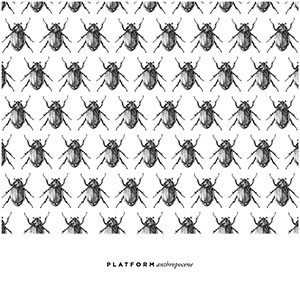 The three Norwegian (and one French) artists who make up Platform may play mostly jazz-oriented instruments but the sounds they create are anything but. Clarinet, cello, piano and drums meld together into a wonderfully jerky, unpredictable free improvised noise. As mostly a live act, this album may not fully do the sound of them collaborating justice, but it makes for an exceptionally good attempt.
The three Norwegian (and one French) artists who make up Platform may play mostly jazz-oriented instruments but the sounds they create are anything but. Clarinet, cello, piano and drums meld together into a wonderfully jerky, unpredictable free improvised noise. As mostly a live act, this album may not fully do the sound of them collaborating justice, but it makes for an exceptionally good attempt.
The sound throughout the ten songs that make up this album varies greatly, from vast space punctuated with strange instrument abuse to dense walls of bizarre instrumentation and improvisation.A piece such as "Brachycera" blends what sounds like percussive cello strings via Katrine Schi√∏tt and what resembles reversed feedback from unknown source.As a whole there is a loose and messy feeling to the piece, but in a fascinating and gripping manner.
"Coleoptera" mimics this feel, with random outbursts from Jonas Cambien's piano and muted sputters courtesy of Xavier Charles' clarinet.There is percussion via Jan Martin Gismervik, but it sounds like anything but drums.Instead it is a random outbursts of rattling and junky, metallic crashes.Sputtering percussive sounds and erratic piano heavily color "Orthoptera", resulting in a spacious work from all four musicians embracing quieter moments, but keeping the levels of entropy high.
Even with all of this intentional dissonance and free form chaos, there are moments where Platform almost sound as if they are playing something more formally composed.Bowed strings and harsh metallic percussion are at the forefront of "Gastropoda", but even with all of this weirdness the four sound as if they are all playing toward the same conclusion, giving an oddly musical sheen.Jazzy piano riffs offset rhythmic noises via percussion and cello, but "Araneae" has the quartet funneling that chaos into something with a loose sense of order and structure.
Essentially Anthropocene is an album of four musicians playing their instruments most often in ways they were never intended to be used.For that reason alone it is not the most accessible album, and that might not even fully capture the nature of the record.However, as a piece of free improvisation in the classic sense, Platform have recorded an album that features just the right amount of head scratching/"how the hell did they make that noise?" weirdness that the best practitioners of the genre manage to create.
samples:
 
Read More
- Administrator
- Albums and Singles
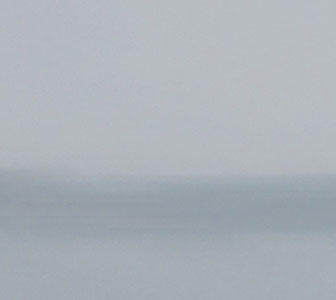 Triac formed in 2011 although did not release their first recorded material, In a Room until just last year. The Italian trio featuring former Tu M' member Rossano Polidoro (laptop) Marco Seracini (piano and synthesizers) and Augusto Tatone (bass) create glacial, yet gripping minimalist music in the spirit of Polidoro’s previous project. Both that and their follow-up record Days have a similar, consistent sound, although growth and development can already be heard from one album into the next.
Triac formed in 2011 although did not release their first recorded material, In a Room until just last year. The Italian trio featuring former Tu M' member Rossano Polidoro (laptop) Marco Seracini (piano and synthesizers) and Augusto Tatone (bass) create glacial, yet gripping minimalist music in the spirit of Polidoro’s previous project. Both that and their follow-up record Days have a similar, consistent sound, although growth and development can already be heard from one album into the next.
There is a certain classical sensibility to the four pieces that make up In a Room, mostly in the form of lush, repeating motifs.Individual instruments are rarely obvious, rather things blend into a misty miasma of veiled melodies and synth noises.The opening "Part I" is the most airy moment here:gentle space looms, punctuated with some occasional swells of low frequency sound (possibly Tatone's bass guitar?) to pepper the loop-heavy sound.There is a cyclic structure that is very apparent, but never does it feel repetitive and via synth strings and pulses, the last half especially shows marked evolution.
"Part II" begins with the trio hinting at a sound that will appear further on in the album, as well as characterize the subsequent Days more heavily.The opening minutes are more forceful and heavy tone-wise, although the heaviness eventually subsides and becomes a lighter piece of drone.There is a mass of shifting melodies to be heard, but compared to the first piece it is more basic from a compositional standpoint.In general that darker sensibility appears more in earnest on "Part III", immediately from the rumbling dark ambient opening.Compared to what preceded it, there is a bleaker and gloomier feel with the deeper noises and bowed-strings like passages.
The concluding "Part IV" sees the band working with less forceful and oppressive sounds, keeping the low end scaled back.Instead, they focus on playing with slow, heavily filtered melodies scattered atop a slightly dissonant bed of fuzzy noise.While Polidoro is not a newcomer to this type of work, this first released collaboration with Seracini and Tatone is a fully realized debut.
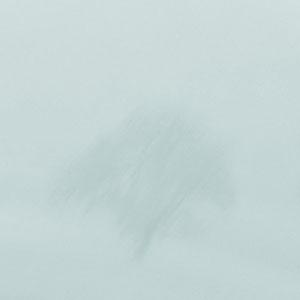 Even with that, there is a slightly more cohesive feel to Days that is fitting for a sophomore release. The trio alternates a bit more often here between the light, floaty pieces and the more grounded, rumbling bassy ones.Complex and intertwining layers define much of "Day One", which opens with a shimmering Aurora Borealis like brightness and closes with pristine, beautifully pure tones.On "Day Three" the band continues with what most likely are gentle synth bells and glistening drones.Like many of the other pieces the trio manage to create pieces that are heavily focused on repetition, but never become repetitious.
Even with that, there is a slightly more cohesive feel to Days that is fitting for a sophomore release. The trio alternates a bit more often here between the light, floaty pieces and the more grounded, rumbling bassy ones.Complex and intertwining layers define much of "Day One", which opens with a shimmering Aurora Borealis like brightness and closes with pristine, beautifully pure tones.On "Day Three" the band continues with what most likely are gentle synth bells and glistening drones.Like many of the other pieces the trio manage to create pieces that are heavily focused on repetition, but never become repetitious.
"Day Two", on the other hand, has the trio working slightly bleaker.Complex, yet heavy melodies factor heavily into the piece, but rather than being grounded it has a disconnected, isolated feel to it that feels more like drifting in outer space than amongst the clouds."Day Five" pairs the two styles together, with lighter higher register sounds blending with the deeper rumbling passages to result in a great stylistic mix.
The final two pieces close Days on a predominantly moody note.The low end surge of "Day Six", mixed with the bowed-string like drones result in a piece that is murkier, with an ever so subtle hint of malignance to it.It never reaches that cavernous reverb and clanking dungeon chains vibe of dark ambient, but hints of that are here.Whereas that piece is somewhat menacing, "Day Seven" has the same rumbling to it, but with the gentle gliding melodies Triac infuse, it sounds more sad than sinister.
With two albums released in the past year, it is unsurprising that much of the sound of In a Room and Days sound a bit overlapping.But the strong consistency is balanced by a more daring, diverse sound on Days.With a sound consistent with Tu M's output but retaining its own distinct identity, Triac have already produced two exceptional albums of rich and diverse, yet meditative and reflective electronic music.
samples:
 
Read More
- Administrator
- Albums and Singles
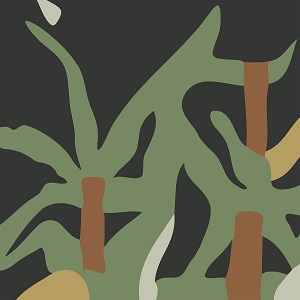 No one could have predicted another Valet record, not even Honey Owens. A rash of techno EPs with The Miracles Club over the last couple of years and a long silence on the hallucinatory front seemed to signal that she was finished with her freaked-out days as a guitar wrangler and soundscape shaper. Drum machines and synth pianos were her new instruments and the dancefloor was her new home, the most natural venue for her conversion to four-on-the-floor rhythms and house melodies. Then, with almost an electric shock, news of a new Valet album on Kranky. Not all is as it was before, however. After seven years and the birth of a child a lot has changed in Valet’s world, and the music has changed with it in a way that is almost as surprising as the album happening at all.
No one could have predicted another Valet record, not even Honey Owens. A rash of techno EPs with The Miracles Club over the last couple of years and a long silence on the hallucinatory front seemed to signal that she was finished with her freaked-out days as a guitar wrangler and soundscape shaper. Drum machines and synth pianos were her new instruments and the dancefloor was her new home, the most natural venue for her conversion to four-on-the-floor rhythms and house melodies. Then, with almost an electric shock, news of a new Valet album on Kranky. Not all is as it was before, however. After seven years and the birth of a child a lot has changed in Valet’s world, and the music has changed with it in a way that is almost as surprising as the album happening at all.
Before Honey Owens dropped the Valet moniker and leaped into The Miracles Club, she sang and played guitar, percussion, and synthesizer on albums by Nudge and Jackie-O Motherfucker. Which is to say, she manipulated instruments for those groups in one fashion or another. By her own admission, she didn’t know how to play an instrument in 1998, when Tom Greenwood and company asked her to perform on Flat Fixed, but she must have been a quick learner. In 2002 she recorded with Paul Dickow and Brian Foote on Nudge’s Trick Doubt, showing not even the least sign of dilettantism, intentional or otherwise. Five years later, when she recorded Blood Is Clean, she had her rudiments in order and was pulling barbed wire from her guitar with the kind of energy and confidence that only practice can yield, but her sound was still nervy and unpolished. Both that album and Naked Acid radiate a sweaty, basement-sessions type of heat. They are bluesy and humid, records swamped in fuzz and the psychedelic fever of drugs and new age self-discovery.
That heaviness translated well on Nudge’s As Good as Gone, released in 2009, which is appropriate because after that the trippy Valet sound disappeared. A series of 12" EPs as The Miracles Club, her acid house project with Rafael Fauria, followed in 2010, ‘11, and ‘12. One of them, A New Love, was released on Mexican Summer. XLR8R then asked them to host a podcast and eventually they produced a dance video so goofy and uninhibited, it could have only come out of Portland, Oregon. Then Owens and Fauria had a kid together and suddenly Valet was on the table again.
Nature sees Honey Owens back behind her guitar, but it doesn’t see her all the way back to the tenderfoot rawness of her first two albums. Rafael Fauria is with the band this time and Mark Evan Burden returns from Naked Acid to play the drums, bass, and keyboard with them. The addition of a new member alone makes a tremendous difference. It transforms Valet from a solo project with guests into a band, and Honey’s writing emphasizes that arrangement. While the songs are still psychedelic, many of their obstreperous edges have been filed down and filigreed with verses, choruses, and hummable melodies. "Sunday" and "Nature," which open the album, are sprightly and feather-light, framed in the glint of strummed guitars and weightless, wordless vocals. They sound like the work of a completely different group and are so far removed from Valet’s previous albums that it takes "Signs" to confirm the authorship. That song is built up from relatively clean layers of percussion, synthesizer, and phased guitars, and it includes a synth lead capable of impressing itself into even the least impressionable of ears, but it induces that same hazy, out-of-focus feel found on older songs like "Sade 4 Bri" and "Drum Movie." In a way, "Signs" links Nature to Honey’s past just so that it can cut the cord. The shift from a darker, murkier sound to a more relaxed, more lighthearted one is what defines the album. It just wouldn’t make as much sense without some kind of nod to what came before.
"Lion" and "Transformation" pick up the blithesome thread, as do the two (mostly) instrumental pieces that fall in-between, and "Child" wraps it up with a guitar and bass duet that repurposes the Valet blues as a relaxed, half-improvised lullaby. It’s as if Honey Owens freed herself from something heavy and simultaneously found her stride as a songwriter. Blood Is Clean and Naked Acid hinted that this was possible, The Miracles Club material confirmed it, and, if you will excuse the pun, Nature is where that talent has found its most natural expression to date. Honey Owens sounds great with a keyboard and a drum machine by her side, but with a guitar in hand, and with something like a full band behind her, she sounds better than she ever has.
samples:
 
Read More
- Administrator
- Albums and Singles
|
Read More





